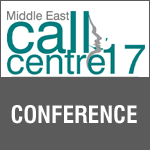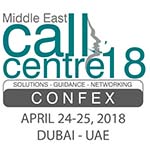 Visitors to the Middle East Call Centre 2017 (MECC ’17) web site at www.insights-me.com/mecc can now view the profiles of the main speakers to be involved in the Main MECC ’17 conference and supporting workshops. With most of them making their Middle East debuts, delegates can expect both fresh insights, and the side benefits of a wealth of industry knowledge and international experience.
Visitors to the Middle East Call Centre 2017 (MECC ’17) web site at www.insights-me.com/mecc can now view the profiles of the main speakers to be involved in the Main MECC ’17 conference and supporting workshops. With most of them making their Middle East debuts, delegates can expect both fresh insights, and the side benefits of a wealth of industry knowledge and international experience.
Delegates can choose to attend the Main Conference only on May 16-17 where, in a dynamic, new interactive format style, the experts will explore proven ways to improve customer satisfaction and get more out of existing call centre staff. Optionally delegates may also choose to attend one of their 1 day workshops on May 15 and/or May 18. In these sessions, extensive treatment will be given to key topics such as “Building a Flexible IVR System”, “Practical Cost Control Measures”, and “Designing & Running An Effective VoC Program”.
To sign up for any of the above and still take advantage of “early bird” discounts go to www.insights-me.com/mecc


